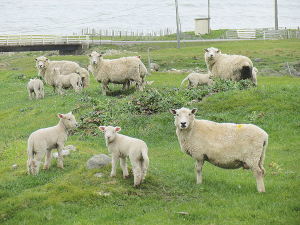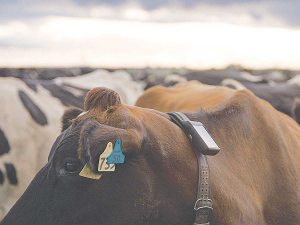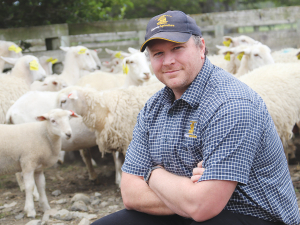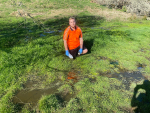Metabolic diseases primarily affect ewes in late pregnancy and sometimes early lactation. These can have a huge economic impact on a farming operation - especially if there are large losses of capital stock. In the first of two articles, we take a look at pregnancy toxaemia.
Pregnancy Toxaemia
Sometimes referred to as sleepy sickness, twin lamb disease, lambing sickness or pregnancy disease.
Pregnancy toxaemia usually affects multiple bearing ewes in late pregnancy.
Predisposing Factors
These usually fall into the categories of either under nutrition or stress, for example:
- Sudden restriction of feed intake in late pregnancy due to yarding, crutching, shearing or a snowstorm.
- Falling nutrition in the last two months of pregnancy. This is when the energy demand from the growing foetus is at its peak.
- Pre-lamb shearing in combination with inadequate shelter during stormy weather will decrease the feed intake of the ewe but will increase the energy demand.
- Any disorder that prevents the ewe from feeding adequately may bring on pregnancy toxaemia, e.g. lameness, teeth issues, internal parasites
In some grazing systems, where the ewes are heavily stocked, the competition for feed may be too high, and the sheep become starved or fed inadequately. Ewes with multiples are more susceptible than single-bearing ewes. Older ewes have been reported to be more susceptible than younger ewes. Lack of exercise is sometimes reported to be a predisposing factor.
Clinical Features
Not all of the symptoms listed will be evident in all cases. Early stages:
- Affected ewe separates herself from the mob
- Appears depressed
- Loss of appetite
- Reluctant to move, often seen as the sheep who lags behind from the mob when shifted (it may take longer to notice these stages if the ewes are set stocked and not shepherded often)
Mid-stages:
- Affected ewes will become more depressed
- Head can be carried in an unnatural position
- Ewe may appear blind and may wander aimlessly
- Show little reaction to dogs or a human
- If forced to move the ewe may stagger or crash into obstacles.
- Wool can be easily plucked from the body
- Neuromuscular symptoms may also appear, such as twitching of the ears and muscles surrounding eyes and muzzle, teeth grinding, and frothing at the mouth
End stages:
- Ewe may become cast
- Stargazing, where the ewe will tilt her head towards the sky
- The ewe may abort the foetus; sometimes the act of lambing aids the prognosis of the ewe, although most lambs are born dead
- Eventually, coma and death
The treatment of pregnancy toxaemia is difficult and produces variable results. Early treatment is the most important factor in a successful recovery. Once the ewe shows severe clinical symptoms or becomes cast then renal (kidney) failure has probably occurred and recovery is unlikely.
Treatment involves provision of carbohydrate such as oral propylene glycol or intravenous dextrose. There are several solutions on the market which contain carbohydrate and other nutrients to aid the synthesis of glucose.
Treatment also involves managing dehydration and maintaining appetite. Administration of calcium borogluconate under the skin is recommended.
Maintaining appetite is very important — if the ewe starts to graze voluntarily then full recovery is more probable. It is important to leave affected ewes with normal ewes to encourage feeding, although adequate shelter is also required.
Managing dehydration is also important and drinking water must be made available. Fluids can also be administered either orally or intravenously (a more expensive option).
Managing dehydration is also important and drinking water must be made available. Fluids can also be administered either orally or intravenously (a more expensive option).
Caesarean section (performed by a veterinarian) reduces the metabolic demand of the foetus. This is more successful in the early stages of the disease.
Prevention
Providing adequate nutrition for pregnant ewes is the most important factor in preventing pregnancy toxaemia. The main guidelines for prevention are as follows:
- Prevent unnecessary fasting and stress in pregnant ewes—particular care should be taken with pre-lamb shearing or crutching to minimise the time ewes spend off-feed.
- Adequately feed pregnant ewes, including preferentially feeding ewes carrying multiples.
Base feeding levels on scanning data and the use of pregnancy feed tables.
Note that inclement weather raises the energy demand of ewes, especially if they have been shorn before lambing. Provide adequate shelter.
Have supplement reserves and a plan ready to feed stock as early as possible following a storm.
www.beeflambnz.com



















